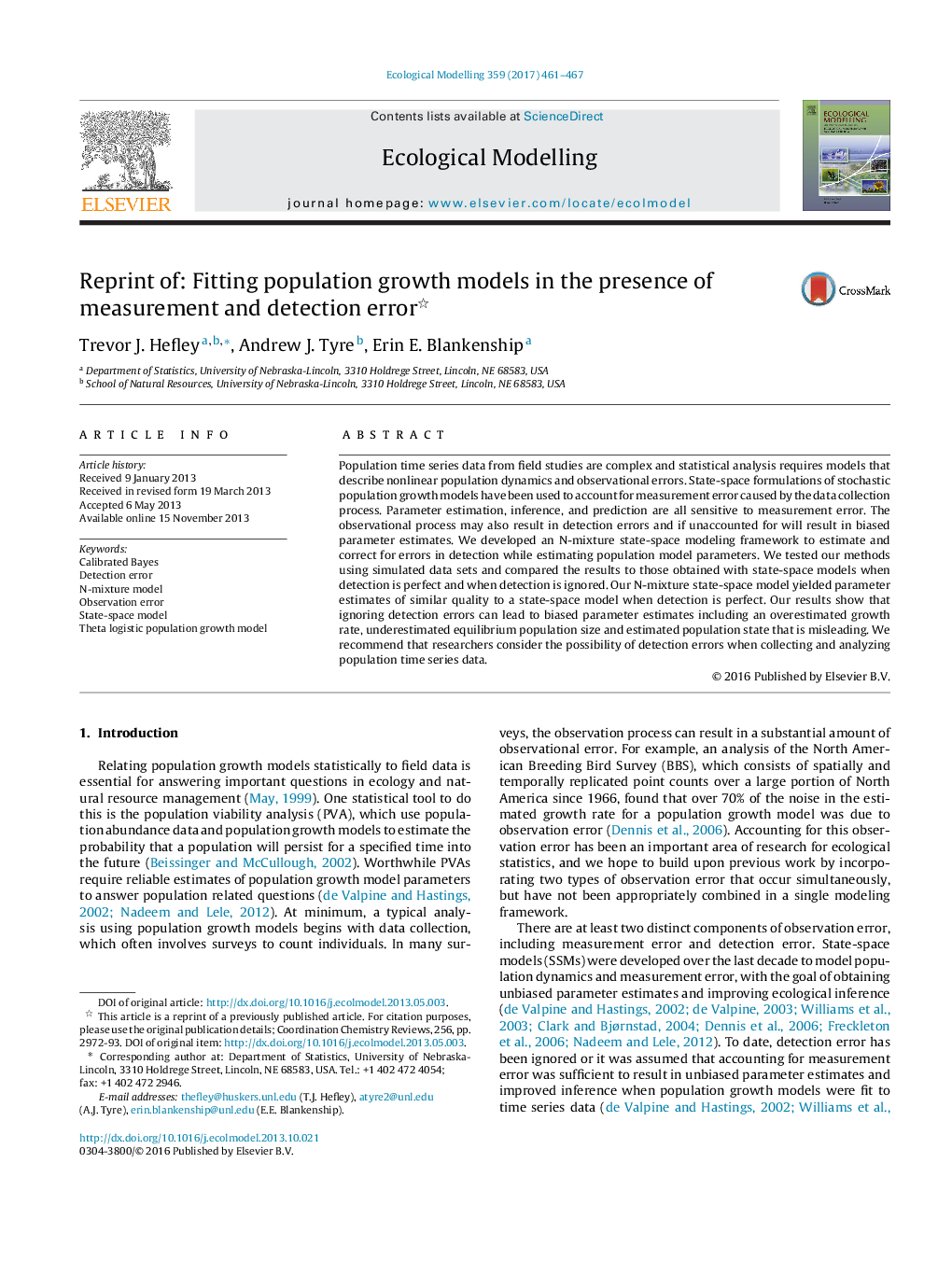| Article ID | Journal | Published Year | Pages | File Type |
|---|---|---|---|---|
| 5742156 | Ecological Modelling | 2017 | 7 Pages |
â¢Detection of individuals in time series data can be imperfect.â¢N-mixture state-space models can account for imperfect detection.â¢We evaluate the statistical properties of the N-mixture state-pace models.â¢If detection is not accounted for estimated model parameters are biased.â¢Our N-mixture state-space models can efficiently correct the bias.
Population time series data from field studies are complex and statistical analysis requires models that describe nonlinear population dynamics and observational errors. State-space formulations of stochastic population growth models have been used to account for measurement error caused by the data collection process. Parameter estimation, inference, and prediction are all sensitive to measurement error. The observational process may also result in detection errors and if unaccounted for will result in biased parameter estimates. We developed an N-mixture state-space modeling framework to estimate and correct for errors in detection while estimating population model parameters. We tested our methods using simulated data sets and compared the results to those obtained with state-space models when detection is perfect and when detection is ignored. Our N-mixture state-space model yielded parameter estimates of similar quality to a state-space model when detection is perfect. Our results show that ignoring detection errors can lead to biased parameter estimates including an overestimated growth rate, underestimated equilibrium population size and estimated population state that is misleading. We recommend that researchers consider the possibility of detection errors when collecting and analyzing population time series data.
